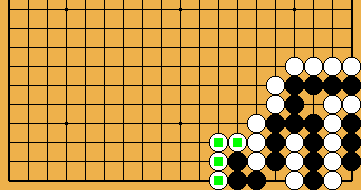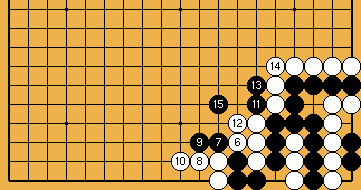About Hanezeki (2009; 2015)
The Problem from XuanXian Qijing
|
|
|
It was Harry again, who made apparent to us that Black's passive move inside the hanezeki might be somewhat sub-optimal. |
|
///:
Playing |
|
|
|
This results in a loss of 20 points for White. |
|
///:
Black cuts at White's stone |
|
///:
|
|
///:
|
|
Black recaptures. |
|
White must recapture, too, due to the atari on her single stone on the outside. |
|
After Black's atari with As a matter of course, |
|
///:
Finally, |
|
Compared with the result of the book's solution, White has lost ten points of territory on the outside ( |
|
///:
|
|
After White's oki of
White should have played |
|
///:
|
|
|
|
Black's group has sufficient liberties left to give atari on White's corner group, with |
|
Finally, Black captures White's group in the corner. |
|
We have 6 + 2 = 8 points for White, and 11 + 7 = 18 points for Black. This time, Black gained "only" ten points in the exchange, twelve points less than with his correct line of play. |
|
///:
However, after White's atari of |
|
///:
|
|
After White's atari of |
|
If White plays oki with If White connects at |
|
///:
|
|
///:
|
|
Again, Black has the choice between |
|
///:
|
|
///:
Black might consider playing |
|
Possibly (who knows?) the unexpected complications described above served as a kind of "booster detonation" for Inoue Dōsetsu Inseki to develop his masterpiece? Please be assured that there are many more, which we will not discuss in great detail here, just because this is a book about Igo Hatsuyōron, not about Gengen Gokyō. Please investigate this sudden outbreak of a long dormant volcano any further on your own. Several issues do play a role here, even with the "simple" kind of a hanezeki:
|
|
|
///:
|
|
Jumping to Finally, Black gets a seki in the corner with |
|
White lost four points of territory ( |
|
///:
Black immediately cuts at |
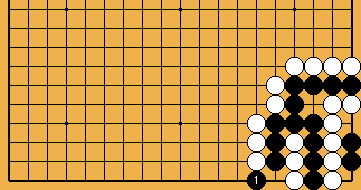
 :
: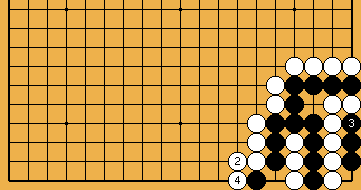
 :
: follows the book's solution, occupying an internal liberty of White's group in the corner. Black ends in sente, because White must give atari on Black's hane in order to convert the position into a seki.
follows the book's solution, occupying an internal liberty of White's group in the corner. Black ends in sente, because White must give atari on Black's hane in order to convert the position into a seki.

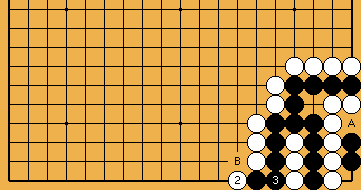
 , instead, would be much too indulgent, allowing White to cover the cut on the lower edge with a move at
, instead, would be much too indulgent, allowing White to cover the cut on the lower edge with a move at  , again reaching the final position shown above.
, again reaching the final position shown above.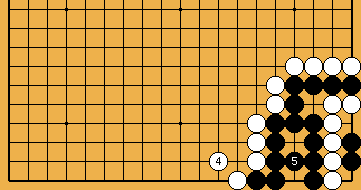
 :
: , and lives in the corner.
, and lives in the corner.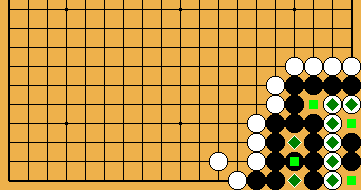
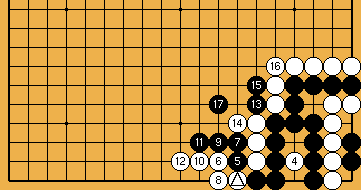
 on the first line is in atari, so the ladder starting with
on the first line is in atari, so the ladder starting with  at
at  ,
,  , would not work for White.
, would not work for White.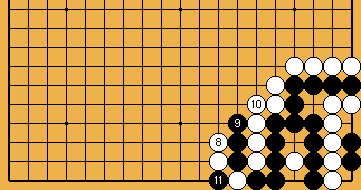
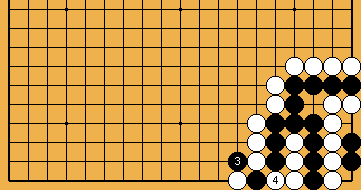
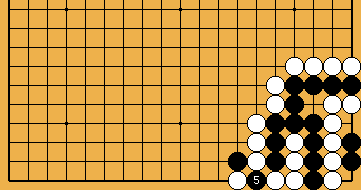
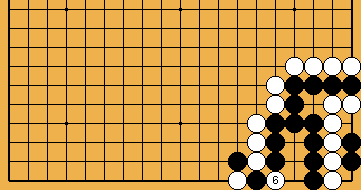
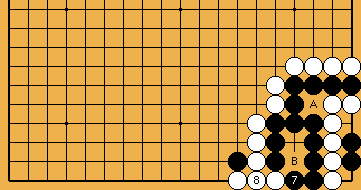
 , White connects at
, White connects at 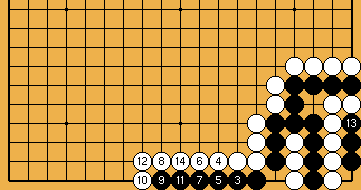
 establishes the hanezeki in the corner, in sente.
establishes the hanezeki in the corner, in sente.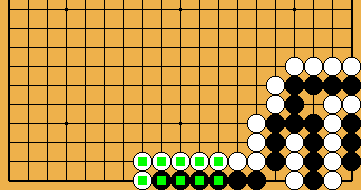
 ,
,  ).
).
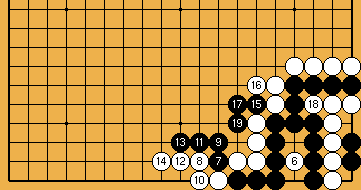
 , Black cuts on the outside with
, Black cuts on the outside with  at
at  will not work, too, because
will not work, too, because  is an atari that must be answered.
is an atari that must be answered. , letting Black get two eyes in the corner with
, letting Black get two eyes in the corner with  . White unasked for Nobi adds two points to Black's gain, which is 22 points then.
. White unasked for Nobi adds two points to Black's gain, which is 22 points then.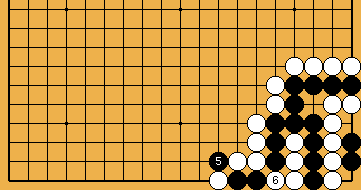
 consists of more than only one stone now, so cutting on the outside with
consists of more than only one stone now, so cutting on the outside with 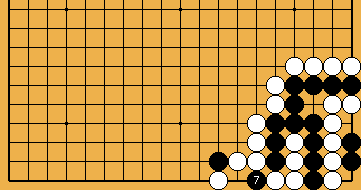
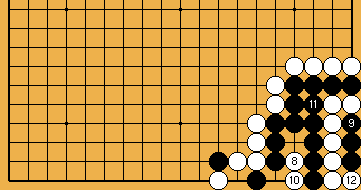
 .
.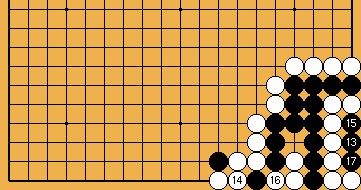
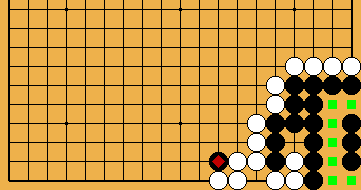
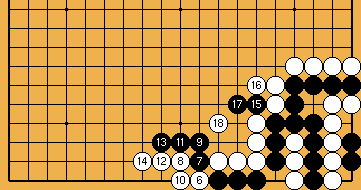
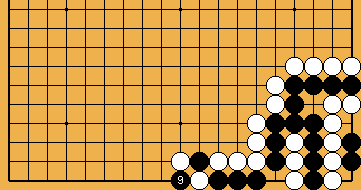
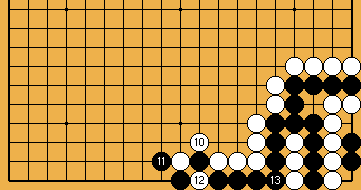
 , Black has the option of playing the Counter-atari of
, Black has the option of playing the Counter-atari of 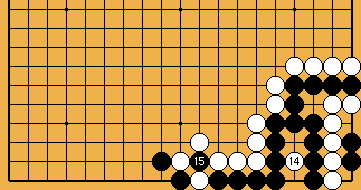
 , instead, she will again suffer from Black living in the corner, with a move at
, instead, she will again suffer from Black living in the corner, with a move at  .
.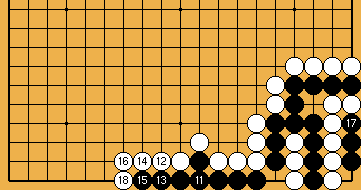
 . "Nobi-ing" by White, and crawling on the first line by Black, will continue, until the hanezeki's tail has reached its "critical" length (that is eight here).
. "Nobi-ing" by White, and crawling on the first line by Black, will continue, until the hanezeki's tail has reached its "critical" length (that is eight here). , and
, and  , turn the position into a seki.
, turn the position into a seki.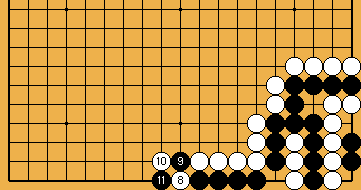
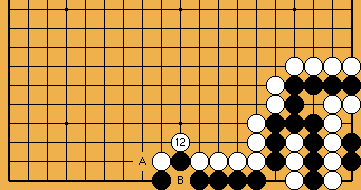
 .
.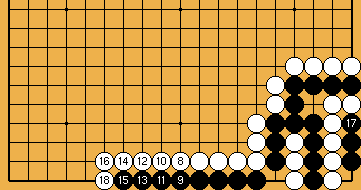
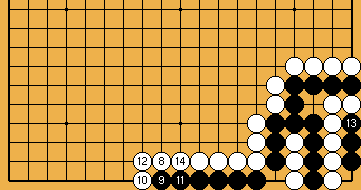
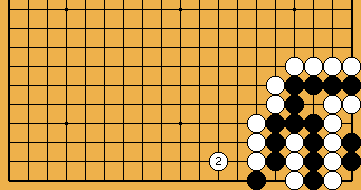
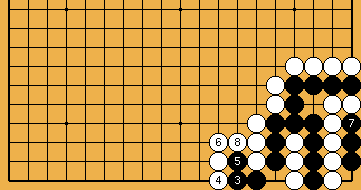
 , instead, would give a similar result.
, instead, would give a similar result.